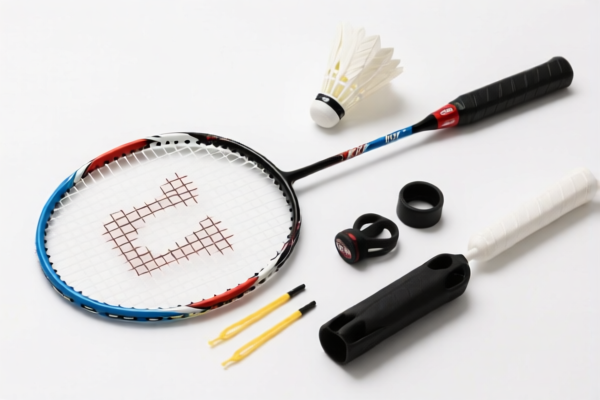| HS Code | Official Doc | Tariff Rate | Origin | Destination | Effective Date |
|---|---|---|---|---|---|
| 3926901000 | Doc | 40.9% | CN | US | 2025-05-12 |
| 3926909989 | Doc | 42.8% | CN | US | 2025-05-12 |
| 3923500000 | Doc | 60.3% | CN | US | 2025-05-12 |
| 3923900080 | Doc | 58.0% | CN | US | 2025-05-12 |
| 9503000071 | Doc | 30.0% | CN | US | 2025-05-12 |
| 9503000073 | Doc | 30.0% | CN | US | 2025-05-12 |
| 9506694000 | Doc | 42.9% | CN | US | 2025-05-12 |
| 9506696020 | Doc | 42.4% | CN | US | 2025-05-12 |
| 9620005000 | Doc | 60.3% | CN | US | 2025-05-12 |
| 9602005080 | Doc | 40.2% | CN | US | 2025-05-12 |
| 3503005550 | Doc | 2.8¢/kg + 3.8%+37.5% | CN | US | 2025-05-12 |




Solid Plastic Ball
A solid plastic ball is a spherical object constructed entirely from plastic material. These balls are ubiquitous, finding applications in recreation, industry, and various specialized fields.
Material
The most common plastics used in their manufacture include:
- Polypropylene (PP): Lightweight, durable, and cost-effective. Frequently used for playground balls and general play.
- Polyethylene (PE): Offers good impact resistance and flexibility. Commonly found in wiffle balls and softer play balls.
- Polyvinyl Chloride (PVC): A harder plastic providing greater rigidity. Used in some heavier-duty balls and those requiring specific shapes.
- Acrylonitrile Butadiene Styrene (ABS): Known for its toughness and resistance to chemicals. Employed in more specialized applications.
Purpose
The primary purpose of a solid plastic ball is versatile, encompassing:
- Recreation/Sport: Used in games like dodgeball, kickball, handball, and various children's play activities.
- Industrial Applications: Used as components in valves, pumps, and flow control devices. Also employed in mixing and agitation processes.
- Decorative Purposes: Used in displays, centerpieces, and art projects.
- Novelty Items: Used in stress balls, gumball machine balls, and other consumer products.
Function
The function of a solid plastic ball is determined by its application:
- Impact Absorption: In recreational use, the ball absorbs and distributes force during collisions.
- Flow Control: In industrial settings, the ball acts as a check valve or a mixing element.
- Weight and Balance: Used as a weighted component in various mechanisms.
- Visual Appeal: Provides a decorative element in displays and art.
Usage Scenarios
- Playgrounds and Schools: Dodgeball, kickball, four square.
- Gymnasiums and Sports Facilities: Various team sports and individual exercises.
- Manufacturing Plants: Flow control in pipelines, mixing in chemical reactors.
- Retail Environments: Gumball machines, promotional items.
- Home and Office: Stress balls, decorative items.
Common Types
- Wiffle Balls: Lightweight balls with holes, designed for reduced speed and increased curve.
- Playground Balls: Larger, durable balls made from PP or PE, often brightly colored.
- Stress Balls: Filled with gel or foam, designed for squeezing to relieve tension.
- Gumball Machine Balls: Small, spherical balls dispensed from gumball machines.
- Precision Balls: Manufactured to tight tolerances for use in industrial applications.
- Hollow Plastic Balls: While not solid, these are related and often used for similar applications, offering lighter weight. They are frequently used in packaging as void fill.
- Bouncy Balls: Made from a specific type of plastic that exhibits high elasticity.
Based on the provided information, the following HS codes may be relevant to “solid plastic ball”:
- 9506694000: Articles and equipment for general physical exercise, gymnastics, athletics, other sports (including table-tennis) or outdoor games, not specified or included elsewhere in this chapter; swimming pools and wading pools; parts and accessories thereof: Balls, other than golf balls and table-tennis balls: Other: Noninflatable hollow balls not over 19 cm in diameter. This code covers balls used for sports and exercise, specifically non-inflatable hollow balls made of plastic and under 19cm in diameter.
- 9506696020: Articles and equipment for general physical exercise, gymnastics, athletics, other sports (including table-tennis) or outdoor games, not specified or included elsewhere in this chapter; swimming pools and wading pools; parts and accessories thereof: Balls, other than golf balls and table-tennis balls: Other: Other Other. This code is a broader category for other types of balls used in sports and games, also made of plastic.
- 3926901000: Other articles of plastics and articles of other materials of headings 3901 to 3914: Other: Buckets and pails. While primarily for buckets and pails, this code broadly covers “other articles of plastics,” which could include solid plastic balls depending on their specific use and characteristics.
- 3926909989: Other articles of plastics and articles of other materials of headings 3901 to 3914: Other: Other. This is a very general category for other plastic articles not specifically classified elsewhere.
Explanation of HS Code Structure (based on provided reference):
- Chapter 39: This chapter covers chemical products, including plastics.
- Heading 3926: This heading specifically covers other articles of plastics.
- Subheading 392690: Further specifies articles of plastics not elsewhere specified.
- Subheading 3926901000 & 3926909989: These are even more specific classifications within the broader category of plastic articles.
- Chapter 95: This chapter covers toys, games, and sports equipment.
- Heading 9506: This heading specifically covers sports equipment.
- Subheading 950669: Further specifies balls used for sports and games.
- Subheading 9506694000 & 9506696020: These are even more specific classifications within the broader category of sports balls.
Important Note:
The applicable tariff rates for these HS codes are as follows:
- 3926901000: 40.9% (Base tariff: 3.4%, Additional tariff: 7.5%, Post-April 2, 2025, additional tariff: 30.0%).
- 3926909989: 42.8% (Base tariff: 5.3%, Additional tariff: 7.5%, Post-April 2, 2025, additional tariff: 30.0%).
- 9506694000 & 9506696020: 30.0% (Base tariff: 0.0%, Additional tariff: 0.0%, Post-April 2, 2025, additional tariff: 30.0%).
It is important to determine the precise material composition and intended use of the solid plastic ball to ensure accurate classification and avoid potential customs issues.
Customer Reviews
No reviews yet.